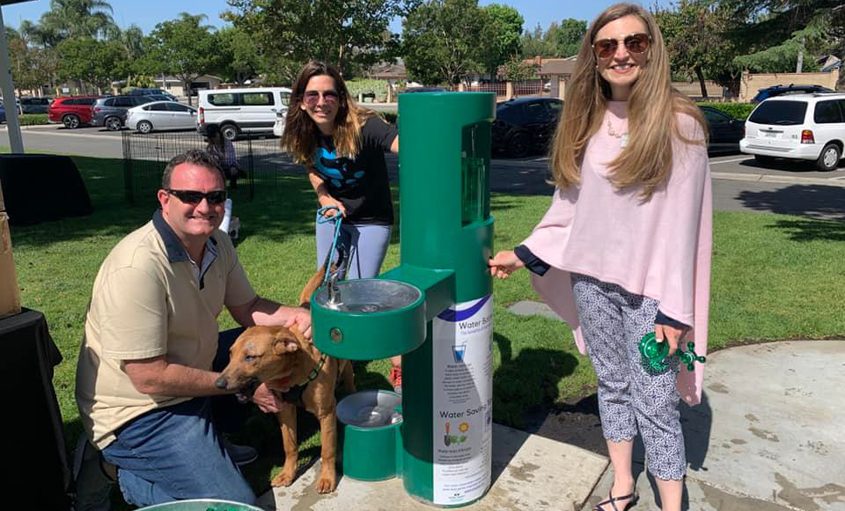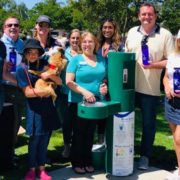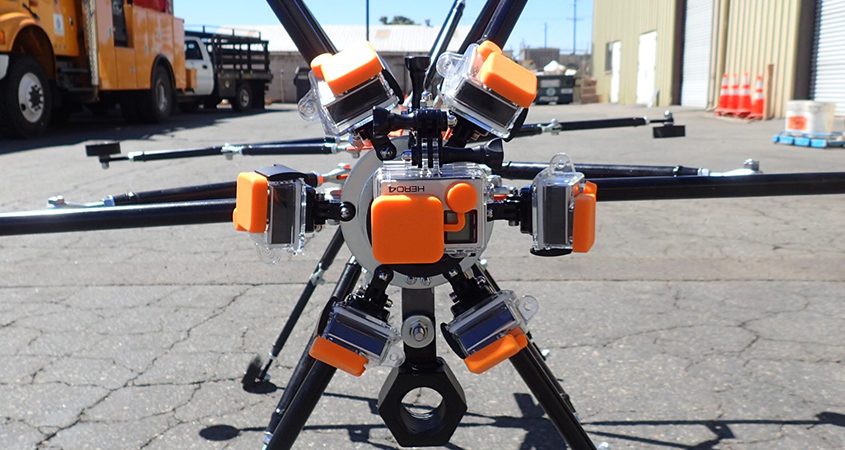Wags and Water Festival Brings Canines and Water Conservation Together
Adoptable dogs and even a few cats found new homes and called attention to new water conservation measures at five San Marcos parks at the first “Wags and Water Festival.” The event was organized by the Vallecitos Water District and the City of San Marcos.

San Marcos and the Vallectios Water District partnered on the new project to encourage water conservation. Five hydration stations have been installed in San Marcos parks to facilitate easy refilling of reusable bottles during outdoor activities instead of using purchased bottled water. Photo: Vallecitos Water District
Residents joined officials, including San Marcos Mayor Rebecca Jones and San Marcos City Councilmember Ed Musgrove; City of San Marcos Parks and Recreation Commissioners Danyte Mockus-Valenzuela and Judy Prestininzi; and Vallectios board members Tiffany Boyd-Hodgson, Ph.D., Jim Pennock, and Mike Sannella, at Woodland Park to fill new reusable bottles with fresh drinking water at the new fill station.
The San Diego County Sheriff’s Department’s K9 team presented a tracking demonstration of their working dogs. Camp Run-A-Mutt San Marcos assisted at the event.
Seven dogs find new homes

San Diego County dog adoption agencies participating at the event placed seven dogs in new homes. Photo: Vallecitos Water District
San Diego County dog adoption agencies participating at the event with adoptable dogs and adoption information included A New Life Rescue, Paws 4 Thought Animal Rescue, and Tragic to Magic and helped call attention to the project. Seven dogs found their forever homes with families who adopted them at the event.
San Marcos and Vallecitos partnered on the new project to encourage water conservation. Five hydration stations have been installed in San Marcos parks to facilitate easy refilling of reusable bottles during outdoor activities instead of using purchased bottled water. Both the City of San Marcos and the Vallecitos Water District are committed to reducing single-use plastics. Each station features a quick-fill mechanism to encourage reusable water bottle use alongside a regular water fountain spout.

Allie Urabe with her new puppy, Patsy. Photo: Vallecitos Water District
Grant funding benefits the community
The hydration station project received $25,000 in grant funding from the San Diego County Water Authority and Metropolitan Water District of Southern California to cover the purchase and installation of the stations, and educational signage informing the public about the benefits of tap water over bottled water. The signage also offers several additional steps people can take to conserve water.
In addition to Woodland Park, fill stations are available at Mission Sports Field Park, Bradley Park, Connors Park, Buelow Park, and Woodland Park.

Both the City of San Marcos and the Vallecitos Water District are committed to reducing single-use plastics. San Diego County Water Authority staffers Emily Rose (L) and Vadim Livshits (R). Photo: Vallecitos Water District
According to the Water Footprint Calculator, it takes 1.5 gallons of water to manufacture a single plastic bottle holding 16 ounces of drinking water. All plastic drinking bottles are made from new plastic material, so there is no recovery due to recycling.
(Editor’s note: The Vallecitos Water District is one of the San Diego County Water Authority’s 24 member agencies that deliver water across the metropolitan San Diego region.)








